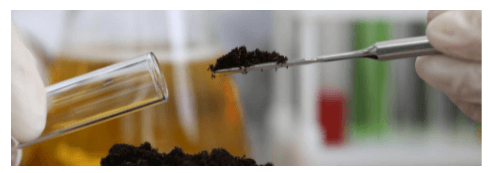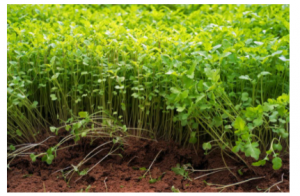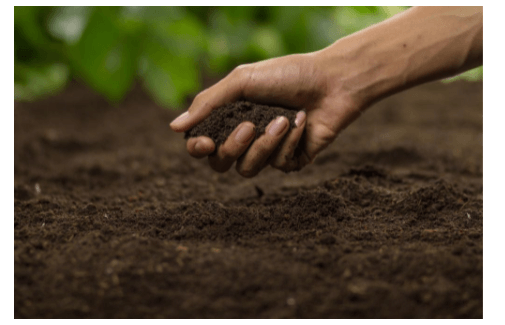Fall is the perfect time to get your garden ready for spring planting. You are probably thinking that you haven’t finished growing this year’s garden yet. But there are things you can do now and garden supplies you’ll need to get you started.
Don’t forget that the entire garden doesn’t have to be treated at the same time. Each time you finish harvesting from a section of the garden, start amending the soil for next year.
Testing Your Soil
One of the most important tools to getting your garden soil ready for next year is a soil test. This can be done at most university Extension services. There are also testing kits available for the home gardener. The test is easy to do and gives you the basic information you need to amend your soil appropriately. A soil test kit should be in every gardener’s collection of garden supplies. The home kit will tell you the levels of nitrogen, potassium and phosphorus in your soil. They also may test your soil’s level of pH.

The information you will get from a professional soil test is the same, but it also tells you both what to add and how much of it to bring your soil to the correct levels. It will also evaluate the type of soil you have and what percentage is organic matter.
So, what are all these chemicals and how do they affect your garden plants? Here is a simple breakdown:
- pH — Most vegetables grow best in a slightly acidic soil. Between 6.0 and 7.0 is optimal.
- Nitrogen (N) — Plants use nitrogen to make the green color and to develop leaves. Plants that have lots of leaves are heavy users of nitrogen. Nitrogen is the first number on a bag of commercial fertilizer.
- Phosphorus (P) — Phosphorus is the second number on a bag of commercial fertilizer. Phosphorus is important for root development. It is used by the plant to increase bloom and fruit production as well.
- Potassium (K) — The last number on a bag of commercial fertilizer is potassium, also known as potash. This is used by plants to keep the plant vigorous and able to fight off diseases. Low potassium can result in stunted plants and fruit.
There are other plant nutrients that may be included in the soil test, including calcium, magnesium and sulfur, but these nutrients are found in much smaller amounts in the soil. These are considered trace elements and if your soil is deficient in any of them, the test results may recommend they be added.
2 Types of Organic Amendments
Armed with the information from your soil test, you can amend the soil to bring it to optimal levels and grow the healthiest and most productive plants. You will have to decide if you want to apply organic material to your garden or if you want to use commercial fertilizers.
If you choose to use organic amendments, there are two primary types that you can add to your soil:
- Compost — This is the perfect material to add organic matter to your garden. If you have clay soil, adding compost will break up the compaction of the soil and give your soil air pockets for the roots to use. If you have sandy soil, the organic matter in compost will help to absorb water and hold it in the soil until your plants need it.

Compost is easy to make, and the material is free! Use any organic material, including grass clippings, plant debris, dried leaves, kitchen waste and even shredded paper.
Another good source of organic material is well-aged animal manure.
If you have access to cow or horse manure, make sure it has aged for at least a year. Fresh manure will burn your plants. Never use dog or cat manure. Both could carry organisms that can be transferred to humans by eating food that is contaminated with this material.
Applying Your Compost — Once you have decided what to add to your garden and how much, spread it on top of the soil. If you have a large garden, you may want to use a tiller to work the material into the soil.
If you have raised beds, a small garden or you are amending the soil in sections, you will be able to turn the soil with a garden fork. Many gardeners are changing to a no-till method of gardening, but you want to make sure the amendments stay in the soil and aren’t eroded by wind or rain.
2.Cover Crops — Cover crops have been used by farmers for many years, but have really gained popularity recently with home gardeners. There are a couple of benefits to planting a cover crop. First, it is an effective way to combat soil erosion. Secondly, it will add a good amount of organic matter to the soil in the spring.

Good choices for cover crops are winter rye, clover and hairy vetch. Allow your cover crop to grow through the winter and, in early spring, use a mulching mower to chop down the cover crop. By using a mulching mower, the cover crop is broken into small pieces that you can then incorporate into the soil where it will quickly break down adding nutrients and organic matter to your garden.
Watering Your Cover Crop — Remember to water your cover crop to get it off to a strong start before the ground freezes. This may be a great time to reevaluate your watering system. With more and more areas of the world being affected by drought, this may be a good time to evaluate and upgrade your garden watering tools.
You may even want to add a simple timer to automatically water your garden for a specific amount of time or you might be interested in using soaker hoses. Another consideration is a water collection system to harvest water from your roof and store it for use when a drought occurs.
Remember that your soil will determine the quality of the plants you grow. This will be an ongoing process that will be guided by the soil tests that should be repeated every three to five years.

Leave a Reply
You must be logged in to post a comment.